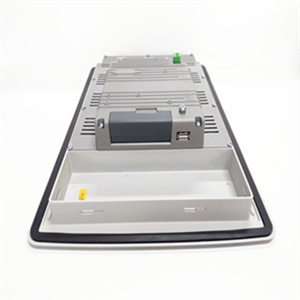产品展示
联系我们
联系人:陈柳铭
手机:15579209656
电话:
Q Q:3136378118
邮箱:3136378118@qq.com
地址:江西省九江市瑞昌市东益路23号赛湖农商城401号
两个或多个过电流保护装置的工作特性
这样,当过电流发生在规定的限制范围内时,打算在这些限制范围内运行的设备会这样做,而其他设备不会运行。”
(IEC 60947-1,定义2.5.23);
可以区分:
•完全歧视,这意味着“过电流歧视
在两个过流保护装置串联的情况下,保护装置
在负载侧提供保护,而不会使另一个保护装置跳闸
装置”(IEC 60947-2,定义2.17.2);
•部分歧视,即“过电流歧视,导致
在两个过流保护装置串联的情况下,保护装置
在负载侧提供高达给定过电流限制的保护,而无需
另一个跳闸”(IEC 60947-2,定义2.17.3);该过电流阈值为
称为“鉴别极限电流为
“(IEC 60947-2,定义2.17.4)。
当前歧视
这种类型的判别是基于观察到断层越近
到达网络馈线时,短路电流将越大。我们
因此,只需通过校准即可定位故障发生的区域
装置上游的瞬时保护达到极限值高于
导致下游装置跳闸的故障电流。
我们通常只能在特定情况下实现完全歧视
故障电流不是很高(与设备的额定电流相当)或
如果高阻抗部件位于两个保护装置之间
(例如变压器、很长或很小的电缆……)产生巨大差异
短路电流值之间。
因此,这种协调主要在终分配中是可行的
网络(具有低额定电流和短路电流值以及高
连接电缆的阻抗)。
研究中通常使用装置的时间-电流跳闸曲线。
该解决方案是:
•快速;
•易于实施;
•价格低廉。
另一方面:
•歧视限制通常较低;
•提高识别级别导致设备尺寸快速增长。
以下示例显示了基于电流判别的典型应用
关于断路器的不同瞬时跳闸阈值
考虑过的。



of the operating characteristics of two or more over-current protective devices such that, on the incidence of over-currents within stated limits, the device intended to operate within these limits does so, while the others do not operate” (IEC 60947-1, def. 2.5.23); It is possible to distinguish between: • total discrimination, which means “over-current discrimination such that, in the case of two over-current protective devices in series, the protective device on the load side provides protection without tripping the other protective device” (IEC 60947-2, def. 2.17.2); • partial discrimination, which means “over-current discrimination such that, in the case of two over-current protective devices in series, the protective device on the load side provides protection up to a given over-current limit without tripping the other” (IEC 60947-2, def. 2.17.3); this over-current threshold is called “discrimination limit current Is ” (IEC 60947-2, def. 2.17.4). Current discrimination This type of discrimination is based on the observation that the closer the fault comes to the network’s feeder, the greater the short-circuit current will be. We can therefore pinpoint the zone where the fault has occurred simply by calibrating the instantaneous protection of the device upstream to a limit value higher than the fault current which causes the tripping of the device downstream. We can normally achieve total discrimination only in specific cases where the fault current is not very high (and comparable with the device’s rated current) or where a component with high impedance is between the two protective devices (e.g. a transformer, a very long or small cable...) giving rise to a large difference between the short-circuit current values. This type of coordination is consequently feasible mainly in final distribution networks (with low rated current and short-circuit current values and a high impedance of the connection cables). The devices’ time-current tripping curves are generally used for the study. This solution is: • rapid; • easy to implement; • and inexpensive. On the other hand: • the discrimination limits are normally low; • increasing the discrimination levels causes a rapid growing of the device sizes. The following example shows a typical application of current discrimination based on the different instantaneous tripping threshold values of the circuit-breakers considered.
相关产品














